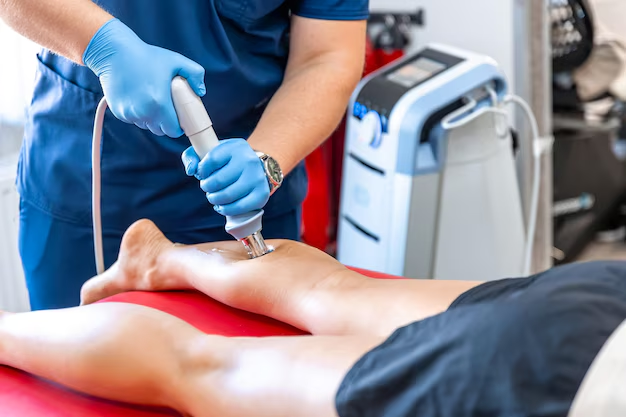
Ultrasound therapy uses high-frequency sound waves to heat tissues, reducing pain, improving blood flow, and promoting healing. Physiotherapists often use it to treat muscle strains, tendinitis, and joint pain. The deep heating can relax muscles, increase flexibility, and reduce inflammation. Improved blood flow aids nutrient delivery and waste removal, supporting natural healing. By working closely with their physiotherapist, patients can benefit from the therapeutic effects of ultrasound and achieve their rehabilitation goals.
A collection of frequently asked questions and answers, providing essential information on various topics.
Ultrasound therapy uses high-frequency sound waves to heat tissues, reducing pain, improving blood flow, and promoting healing. Physiotherapists often use it to treat muscle strains, tendinitis, and joint pain. The deep heating can relax muscles, increase flexibility, and reduce inflammation. Improved blood flow aids nutrient delivery and waste removal, supporting natural healing. By working closely with their physiotherapist, patients can benefit from the therapeutic effects of ultrasound and achieve their rehabilitation goals.
Ultrasound therapy is a widely used physiotherapy treatment that uses high-frequency sound waves to penetrate body tissues, promoting healing and pain relief. It is primarily used to treat musculoskeletal injuries, reducing inflammation, improving circulation, and accelerating healing. Ultrasound can also break down scar tissue and adhesions, improving flexibility and mobility. It is effective in managing chronic pain conditions by alleviating pain and promoting endorphin release. Physiotherapists administer the therapy at the appropriate intensity and duration to achieve desired outcomes.
Ultrasound therapy is a non-invasive technique used to address various musculoskeletal and soft tissue conditions, such as: - Tendinitis: Ultrasound reduces inflammation and promotes healing in tendons. - Muscle strains and sprains: It accelerates healing by increasing blood flow and reducing pain and swelling. - Joint pain and stiffness: It improves joint mobility and alleviates pain in conditions like osteoarthritis and rheumatoid arthritis. - Bursitis: Ultrasound can address inflammation and pain in the fluid-filled sacs around joints. - Scar tissue management: It can help break down and soften scar tissue, aiding rehabilitation.
Ultrasound therapy is a common treatment for musculoskeletal conditions. Session duration varies based on the patient's needs and the condition. Typically, sessions last 5-15 minutes, with shorter times for smaller areas and longer times for larger areas like the back or shoulder. Treatment time also depends on targeted tissue depth and ultrasound intensity. The overall treatment plan may involve multiple sessions scheduled over time to achieve the desired effects, as determined by the healthcare professional.
Ultrasound therapy in physiotherapy can have some side effects. Patients may experience mild warming, which can cause discomfort, especially in sensitive areas. Prolonged exposure can rarely damage tissue, though this is uncommon with trained physiotherapists. Increased inflammation in the treated area is another possible side effect. There is also a small risk of allergic reactions to the coupling gel. Patients should communicate concerns to their physiotherapist, who can adjust the treatment or explore alternatives. When used appropriately by qualified professionals, ultrasound therapy is generally safe and effective for managing musculoskeletal conditions.
Before ultrasound physiotherapy, communicate with your physiotherapist about your medical history and concerns to tailor the treatment. Wear loose, comfortable clothing and avoid lotions on the treatment area. Drink plenty of water beforehand, as hydration can enhance the ultrasound's effectiveness and minimise discomfort. Be mentally prepared and communicate openly during the treatment, so the physiotherapist can adjust as needed.